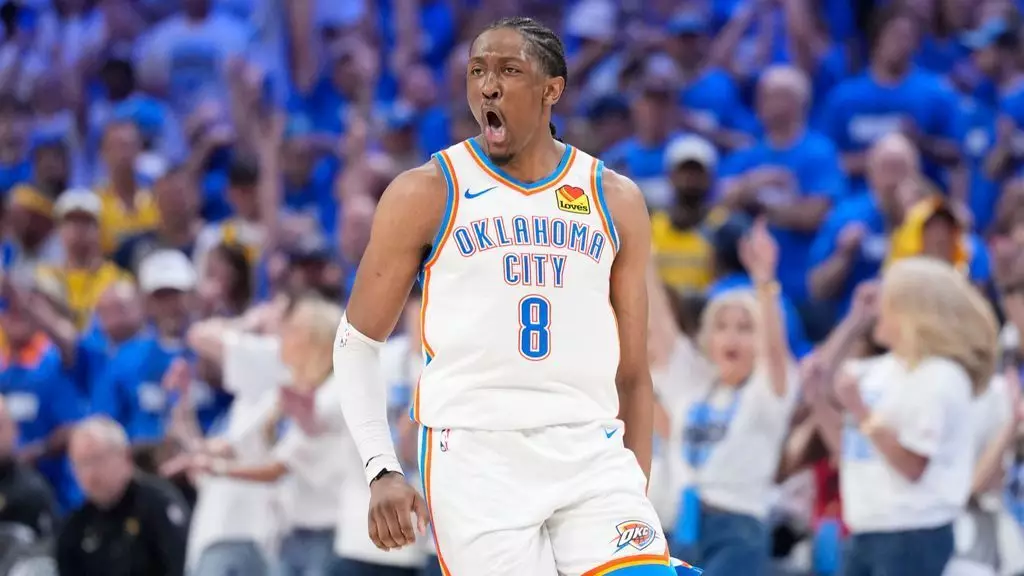The Oklahoma City Thunder’s recent roster and contract strategy has thrust the franchise into the spotlight, attracting both admiration and skepticism. Their decision to lock in three core players—Shai Gilgeous-Alexander, Chet Holmgren, and Jalen Williams—on long-term max contracts reflects a bold belief in their youthful core. Yet, this ambitious gamble may also reveal a troubling myopia regarding sustainable team-building and fiscal responsibility. While their confidence in these young stars is laudable, the underlying economics and injury concerns suggest a fragile foundation that could jeopardize long-term competitiveness.
The franchise’s recent signings, totaling a staggering $822 million in guaranteed money, exemplify an aggressive approach that persists despite rising NBA luxury tax thresholds. The move indicates a willingness to prioritize immediate title contention over financial prudence. Critics argue that such heavy investments, especially when made for players still in their early 20s and with limited playoff experience, are speculative at best. The risk of overpaying for unproven stars is amplified by their injury histories—particularly Williams’s recent wrist surgery—highlighting the peril of putting so much faith in unproven durability.
Stars or Overhyped Projects? A Risky Path Forward
Despite the buzz around Williams’s stellar performance and potential as a defensive stalwart and scorer, questions remain about the sustainability of this approach. Williams’s breakout season, highlighted by an impressive Finals performance, was marked by exceptional feats—such as a 40-point Game 5—yet these moments also mask his relative inexperience on the grandest stage. His injury, sustained late in the season, exposes a broader issue: the fragility inherent in relying heavily on young, still-developing players who have yet to demonstrate consistency over multiple seasons.
From a broader perspective, this “all-in” strategy, pushing significant resources into unseasoned talent, risks turning the franchise into a transient powerhouse rather than a sustainable contender. The NBA has shown repeatedly that even the most talented young teams require time and thoughtful development rather than immediate financial commitments that constrain future flexibility. The Thunder’s escalating payroll, forecasted to surpass the luxury tax thresholds, threatens their ability to adapt and invest in scouting, development, or high-impact veteran signings in the coming years.
Moreover, the emotional lure of a potential dynasty may eclipse pragmatic planning. While fans and management seek immediate gratification, this tendency often leads to instability once injuries, aging, or underperformance take hold. The Thunder’s recent commitment to their core signals confidence, but it also reveals a disconnect from the lessons of NBA history: that sustainable success hinges on strategic growth and fiscal health, not just star power and hefty contracts.
The Illusion of Long-Term Control
It’s tempting to see these contracts as evidence of strategic vision—a clear plan to dominate the next decade. Yet, beneath this veneer lies the harsh reality of NBA roster management. The franchise’s decision to tie up an enormous chunk of their salary cap with players still in the bloom of youth might provide short-term headlines and playoff hopes. But it leaves them exposed to unforeseen setbacks—be it injuries, stagnation, or market shifts—that could derail their championship pursuits.
Furthermore, the focus on a “Big 3” with sizable deals complicates constructing a balanced team. Although their roster boasts promising depth that can be managed with non-guaranteed contracts, the financial pressure of operating under the luxury tax could limit their ability to respond to unforeseen challenges. This situation underscores a central dilemma: is the Thunder truly investing in a sustainable future, or merely chasing a fleeting window of glory?
In many ways, the franchise’s approach mirrors an increasingly prevalent trend among young teams—prioritizing star power over team cohesion and long-term planning. While it’s easy to admire their audacity, it’s equally necessary to critique the potential hubris involved. No team has convincingly maintained a championship-level roster built solely through high-priced, young talent without eventual detriment. That reality should caution the Thunder against overestimating their current trajectory and undervaluing the importance of patience and strategic flexibility.

Leave a Reply